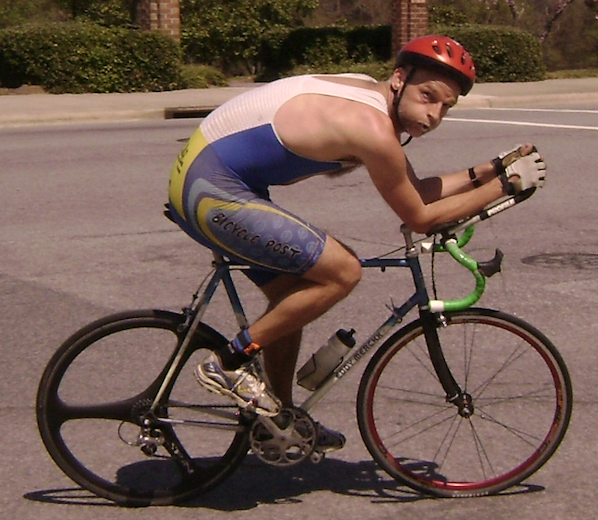Physics reveals a tailwind doesn’t help as much as you might think — it’s negligible.
From the Journal: American Journal of Physics

WASHINGTON, Sept. 20, 2024 – Within the cycling realm, “to Everest” involves riding up and down the same mountain until your ascents total the elevation of Mt. Everest — 8,848 meters.
After a new cycling “Everesting” record was set a few years ago, a debate ensued on social media about the strong tailwind the cyclist had on climbs — 5.5 meters per second (20 kilometers per hour or 12 miles per hour) — when he set the record. To what extent did the tailwind help him? Should limits be set on the allowed windspeed?
Martin Bier, a physics professor at East Carolina University in North Carolina, became intrigued by this debate and decided to explore the physics, and a little project ensued. In the American Journal of Physics, from AIP Publishing, he shares his finding that, ultimately, the wind turns out to be of negligible consequence.
First, a little background: From a physics perspective, cycling is easier to comprehend than running. “In running, the motion of the legs is repeatedly accelerated and decelerated, and the runner’s center of mass moves up and down,” said Bier. “Cycling uses ‘rolling,’ which is much smoother and faster, and more efficient — all of the work is purely against gravity and friction.”
But there’s something odd about air resistance. The force of air friction you fight goes up with the square of your speed. If air resistance is the main thing limiting your speed — which is true for a cyclist on flat ground or going downhill — then to double your speed, you need four times the force. Tripling your speed requires nine times as much force. But, on the other hand, when cycling uphill, your speed is much slower, so air resistance isn’t a big factor.
“When you’re riding up a hill and fighting gravity, doubling your power input means doubling your speed. In bike races, attacks occur on climbs because it’s where your extra effort gets you a bigger gap.”
On a solo Everesting effort, calculations are straightforward. A rider isn’t getting an aerodynamic draft from another rider ahead of them. The inputs are simply watts, gravity, and resistance.
“Naively, you may think that a strong tailwind can compensate for an uphill slope,” said Bier. “You then ride up the hill as if it’s a flat road, and on the way down the headwind and downward slope balance out and again give you the feel of a flat road. But it doesn’t work — the square I mentioned earlier wreaks havoc!”
His work shows the tailwind may help a little on the climb, but most of the work on the way up is the fight against gravity. The subsequent descent is fast and lasts a much shorter time, while the headwind there actually has a huge effect. And the speed on a descent is high — about 80 kph (49.7 mph).
“Air resistance goes with the square of the speed, which leads to the headwind on the descent and causes a big reduction in speed,” Bier said. “The wind boost on the ascent is canceled out.”
The obvious implication of Bier’s work is there’s no point in waiting for the ideal wind if you want to improve your Everesting time. “There are no easy tricks,” he said. “If you want to be a better Everester, you need to lose weight and generate more watts (exercise). This is what matters — there’s no way around it.”
###
Article Title
The physics of ‘Everesting’ on a bicycle
Authors
Martin Bier
Author Affiliations
East Carolina University
American Journal of Physics
ABOUT THE JOURNAL
American Journal of Physics is devoted to the instructional and cultural aspects of physics. The journal informs physics education globally with member subscriptions, institutional subscriptions, such as libraries and physics departments, and consortia agreements. It is geared to an advanced audience, primarily at the college level. Contents include novel approaches to laboratory and classroom instruction, insightful articles on topics in classical and modern physics, apparatus, and demonstration notes, historical or cultural topics, resource letters, research in physics education, and book reviews.
ABOUT AAPT
AAPT is an international organization for physics educators, physicists, and industrial scientists—with members worldwide. Dedicated to enhancing the understanding and appreciation of physics through teaching, AAPT provides awards, publications, and programs that encourage teaching practical application of physics principles, support continuing professional development, and reward excellence in physics education. AAPT was founded in 1930 and is headquartered in the American Center for Physics in College Park, Maryland.
